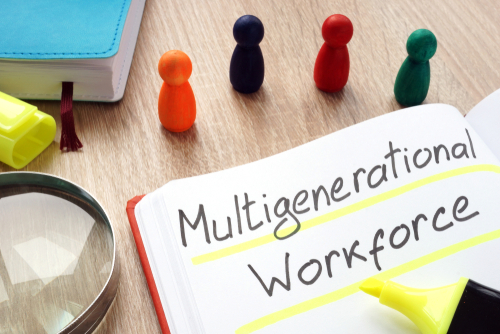The traditional image of workplace communication, centered around the water cooler, is rapidly evolving. As Reggie Willis, Chief Diversity Officer at Ally Financial, recently highlighted at SPARK HR 2025, nearly half of employees now prefer digital communication, even when physically close.
This shift, amplified by generational differences, presents both challenges and opportunities for HR professionals. How can HR leaders effectively navigate this complex territory and foster a cohesive, engaged workforce spanning multiple generations?
Here are Willis’s seven power plays to help HR leaders unite a multigenerational workforce.
1. Uncover Shared Ground: Focus on Commonalities, Not Just Differences
While generational stereotypes abound, Willis emphasizes that “we have more in common than we do that are different.” Instead of solely focusing on perceived divisions, HR should actively identify and leverage shared values and goals.
HR Tip: When bringing teams together for purpose alignment or goal-setting, facilitate discussions that highlight common goals like work-life balance, purpose in work, and the desire for connectivity. While the definition of these concepts might vary across generations, the underlying desire is universal.
2. Turn Differences into Strengths: Intentionally Build Diverse Teams
Each generation brings unique perspectives and skills to the table. Instead of viewing these differences as obstacles, HR can strategically leverage them for innovation and better business outcomes.
HR Tip: When forming teams, consciously consider generational representation. A mix of Traditionalists, Boomers, Gen X, Millennials, and Gen Z can bring a wider range of problem-solving approaches, technological proficiency, and understanding of diverse target markets.
3. Cultivate Psychological Safety: Create Space for All Voices
Simply having a diverse team isn’t enough. HR must foster an environment where all employees, regardless of generation, feel safe to share their ideas, ask questions, and even challenge the status quo.
HR Tip: Promote inclusive meeting practices that encourage participation from everyone. Actively seek input from junior employees and ensure their contributions are valued.
4. Embrace Diverse Approaches: Recognize Multiple Paths to Success
Generational differences often manifest in how individuals approach tasks and problem-solving. HR should encourage flexibility and recognize that there isn’t always one “right” way to achieve a goal.
HR Tip: Facilitate cross-generational collaboration on projects to expose teams to different methodologies and perspectives. Encourage mentorship opportunities, including reverse mentoring, where younger employees can share their tech-savviness and fresh perspectives with more senior colleagues.
5. Foster Interdependence and Belonging: Emphasize Collective Goals
Building a cohesive workplace requires fostering a sense of belonging and highlighting the interdependence of different generations. Employees need to understand how their contributions, regardless of age, contribute to the overall success of the organization.
HR Tip: Regularly communicate the company’s mission and goals, emphasizing how each team and individual plays a vital role. Implement mentorship programs (group, peer, reverse) to build connections and understanding across generations. Regularly assess employee engagement, paying attention to feelings of belonging and connection.
6. Teach, Educate, and Debunk Stereotypes: Promote Understanding
HR plays a crucial role in educating employees about generational differences while actively challenging negative stereotypes. This fosters empathy and understanding, leading to more effective communication and collaboration.
HR Tip: Incorporate informal learning opportunities, such as brief stand-up discussions or “did you know?” facts about different generations. Encourage open conversations about communication styles and preferences, and highlight individual differences within generations.
7. Adapt Communication Styles: Tailor Your Approach for Impact
Understanding generational communication preferences can significantly enhance the effectiveness of HR communications, from onboarding to crucial announcements.
HR Tip: Be mindful of the communication channels preferred by different generations. While Gen Z might respond well to instant messaging and emojis (used appropriately), more formal communication might be better suited for email. Remember that context and audience are key. Be open to adapting your style while maintaining professional standards.
The Bottom Line: Cultivate an Environment Where Everyone Thrives
Ultimately, HR’s role in navigating generational differences is about creating an inclusive environment where all employees feel valued, connected, and empowered to succeed. By implementing these seven power plays, HR leaders can bridge the generational divide and build a stronger, more resilient, and ultimately more successful organization.
Did you miss SPARK HR this spring? Not to worry! Join us live in San Antonio at SPARK TALENT 2025 and get practical strategies focusing on workforce planning, talent acquisition, and AI-driven processes! Discover proven solutions from top HR thought leaders from PepsiCo, Walmart, Staples, The Coca-Cola Company, Marriott, and GE HealthCare, and get ready to adapt your talent strategy for the future.

